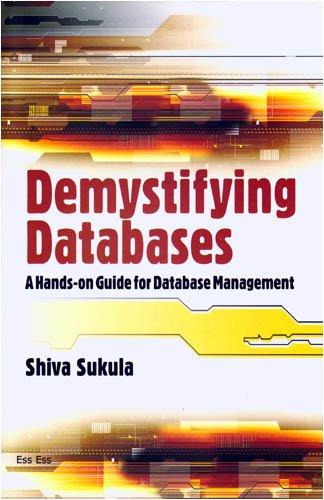Question
AJAX Example Use AJAX to Read a JSON file Introduction In this assignment you will use AJAX to read in an external JSON data file.
AJAX Example Use AJAX to Read a JSON file
Introduction
In this assignment you will use AJAX to read in an external JSON data file. You will convert this external JSON data file into a JavaScript object and then display the contents in a web page.
Student Information from JSON file
Loading student data...
Add this CSS to your "css/styles.css" file:
body { background: transparent url('https://chelan.highline.edu/~tpollard/assets/images/tri.svg') top center no-repeat; background-size: cover; color: #555; font-family: Arial,Helvetica,sans-serif; } h1, h2, h3 { font-family: Arial, Helvetica, sans-serif; } h2 { border-bottom: 0.02em solid #3f87a6; color: #3f87a6; } .loading { background: transparent url('https://chelan.highline.edu/~tpollard/assets/images/ajax-loader_trans.gif') center left no-repeat; color: #94aace; font-size: smaller; font-style: italic; padding-left: 20px; } .loadingHidden { display: none; } main { width: 100%; min-height: 60vh; max-width: 40em; background: white; box-shadow: 0 0 2em #ccc; padding: 2em 5% 3em 5%; margin: 0 ; display: flex-container; } section { margin-bottom: 2em; } .student-info p { background: transparent url('https://chelan.highline.edu/~tpollard/assets/images/user_grayscale.png') center left no-repeat; padding-left: 20px; } @media (min-width: 45em) { main { width: 80%; padding: 2em 5% 6em 5%; margin: 4em ; } }
Like the previous assignments, you should use "window.onload" to wait until the HTML page is loaded before any of your other JavaScript is run: Waiting for the Page to Load & Event Listeners
At the beginning of your "js/scripts.js" file you should do something like this:
// Wait until the page loads. window.onload= function(){ // Read JSON data and display to page. processData(); }; The next function calls the ajaxLoadFile function. A copy of the ajaxLoadFunction to use is listed at the bottom of the assignment.
We pass in 2 arguments to the function:
- the path to the file "data/students.json",
- and the callback function to run after the file was successfully read from the server.
The callback function then converts the JSON string into a JavaScript object, and then passes that object to the displayData function:
// Read the student JSON string, convert it to a JavaScript object. function processData() { ajaxLoadFile('data/students.json', function(response) { // Convert JSON string into JavaScript Object. let jsResponse = JSON.parse(response); // Display the results displayData(jsResponse) ; }); } This displayData function needs to do these things:
- Loop through the "students" object.
- Read the first name, last name, and favorite hobby from each object.
- Use template literals to create your text for each paragraph: JavaScript Template Literals
- Add the paragraphs to a DOM fragment
- Add that DOM fragment into the "student-info" section element.
- Use querySelector to read the "p.loading" paragraph.
- Change the class attribute of that paragraph to from 'loading' to 'loadingHidden' using 'classList.replace': Setting CSS Styles Using JavaScript
// Display the student data. function displayData(students) { // Add the student data to the DOM. // Hide the loading message. }
Add the following JavaScript function to the end of your "js/scripts.js" file. You will use this function to read the JSON file from the server. Take some time to read through this code to understand how it works: Anatomy of an AJAX Request
/** * Description: Loads a file from the web server. Runs a callback function if sucessfull. * Parameters: filename The filename to load. * callback The callback function to run after the file has been loaded. */ function ajaxLoadFile(filename, callback) { // Create new request. let xobj = new XMLHttpRequest(); // Add datetime parameter to the URL to prevent browser caching. let bustCache = '?datetime=' + new Date().getTime(); xobj.open('GET', filename + bustCache, true); xobj.onreadystatechange = function() { // 4 == DONE, 200 == request was fulfilled. if (xobj.readyState == 4 && xobj.status == "200") { // File was loaded so run callback function. callback(xobj.responseText); } } xobj.send(null); } Step by Step Solution
There are 3 Steps involved in it
Step: 1

Get Instant Access to Expert-Tailored Solutions
See step-by-step solutions with expert insights and AI powered tools for academic success
Step: 2

Step: 3

Ace Your Homework with AI
Get the answers you need in no time with our AI-driven, step-by-step assistance
Get Started


